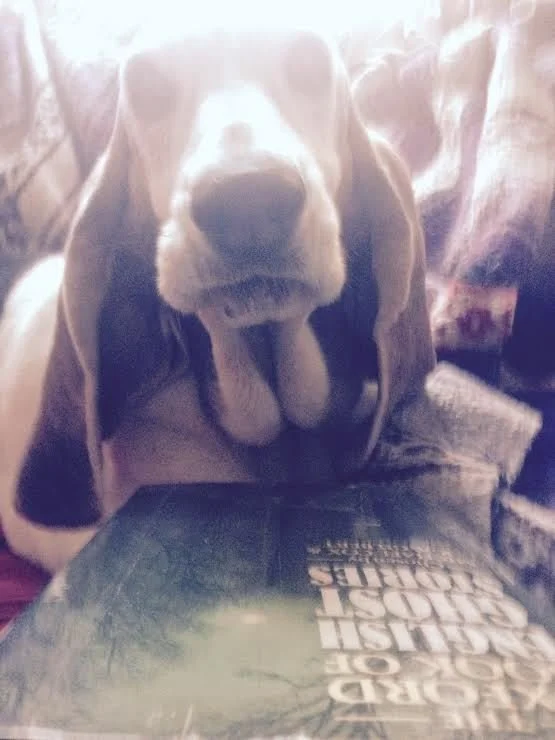The Oxford Book of English Ghost Stories!
/Our book today is a nifty gem from the old “Oxford Book” line: 1986’s The Oxford Book of English Ghost Stories, edited by Michael Cox and R. A. Gilbert, with its great cover art showing John Atkinson Grimshaw’s endlessly evocative An Old Lane by Moonlight (honestly, what anthology wouldn’t be improved by such a cover? And haven’t I seen it used for more than one collection of Sherlock Holmes stories?). In a bit of nostalgia for all the childhood Halloweens I watched from afar – one is not invited to go trick-or-treating if one is constantly accompanied by a small crowd of hungry dogs – I take down a ghost story collection every year at this time and savor familiar goodies (or, in the case of a book on, for instance, Japanese Yurei, encounter entirely new goodies). Cox and Gilbert packed this volume with such goodies, and they come right to the point in their Introduction: “Whatever we do with the dead they will not go away,” they write. “Whether we entomb and isolate them or scatter their ashes, they remain as ghosts in our memories and faced with their continuing presences we have no option but to learn to live with them.”
This is certainly true: humans have been telling ghost stories as long as humans have been humans – we have cave paintings of dead animals and people having posthumous adventures, and the advent of literature only multiplied that tendency. And yet, writing a successful ghost story is much trickier than simply frightening your audience, which might be why writers like Stephen King have never managed it (the subtlety of something like Peter Straub’s Ghost Story being utterly beyond such schlock-purveyors). In fact, our editors quote the great LP Hartley on the subject, who described the ghost story as “certainly the most exacting form of literary art, and perhaps the only one in which there is almost no intermediate step between success and failure. Either it comes off or it is a flop.”
Curiously, considering they had awareness enough to include such a quote, Cox and Gilbert actually pick a few flops for this collection. But oh! The successes far, far outnumber them! We have The Friend of the Friends from Henry James (who was, apparently, only boring when he wrote about the living), The Judge’s House by Bram Stoker (a nicely unconventional choice), Mr Jones by Edith Wharton (criminally underestimated as a teller of ghost stories, despite the appearance of half a dozen anthologies over the years specifically designed to highlight this knack of hers), and Soft Voices at Passenham by T H White (once you get away from the sweet melancholy of The Once and Future King, you realize what a deeply creepy author he was – and in it’s there in The Once and Future King as well, as anybody who’s read the unicorn scene can attest). There are little bits of perfection from two masters of the form, Ahoy, Sailor-Boy! By AE Coppard and Oh Whistle, and I’ll Come to You, My Lad by MR James (fully three-quarters of the authors in this anthology have two initials for their first names – it must have been a fad among mothers at the time).
We get slow, incremental scares, as when ME Braddon’s skeptical Michael Bascom encounters the specter of his dead father in 1879’s The Shadow in the Corner:
Yes: there was the shadow: not the shadow of the wardrobe only – that was clear enough, but a vague and shapeless something which darkened the dull brown wall; so faint, so shadowy, that he could form no conjecture as to its nature …
And we get the more standard outright startle-scene, as in The Confession of Charles Linkworth, a taut 1912 story by the always-dependable EF Benson:
‘Something is coming!’ said the doctor.
As he spoke it came. In the centre of the room not three yards away from them stood the figure of a man with his head bend over on to his shoulder, so that the face was not visible. Then he took his head in both hands and raised it like a weight, and looked them in the face. The eyes and tongue protruded, a livid mark was around the neck. Then there came a sharp rattle on the boards of the floor, and the figure was not longer there. But on the floor there lay a new rope.
An addendum to Hartley’s comment about the all-or-nothing nature of the ghost story’s success would surely be born out by this great green volume: surely a successful ghost story is also one that will raise goosebumps even on the third or fourth re-reading. Plenty in this creepy company do.


